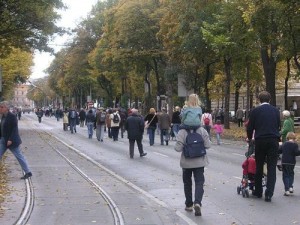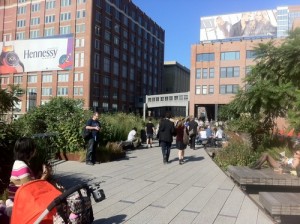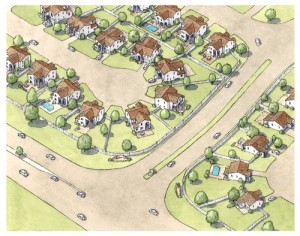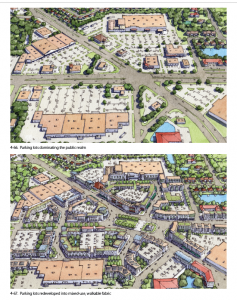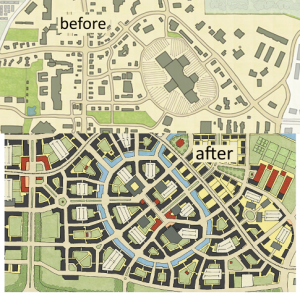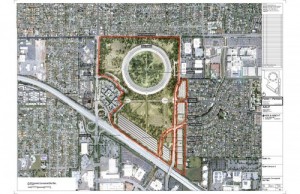Aging in Place on a Cul-de-Sac
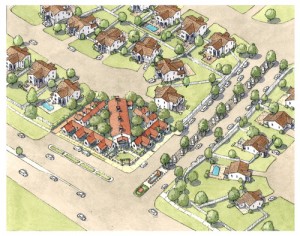
This is the second installment on the topic of cul-de-sacs, the quintessential elements of sprawl. The first installment proposed a Micro Sprawl Repair using the Complete-the-Neighborhood Module. The Complete-the-Neighborhood Module could be applied to any two or three lots on a cul-de-sac in any subdivision where blighted or foreclosed properties exist, or where the community has decided to upgrade their quality of life by introducing new amenities. This post discusses the use of the Supportive Living Module to create opportunities for senior living within a single-family subdivision. Aging in place – growing old and retiring in the community where a…
